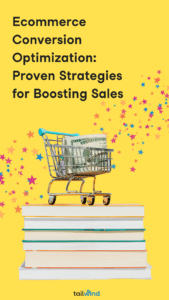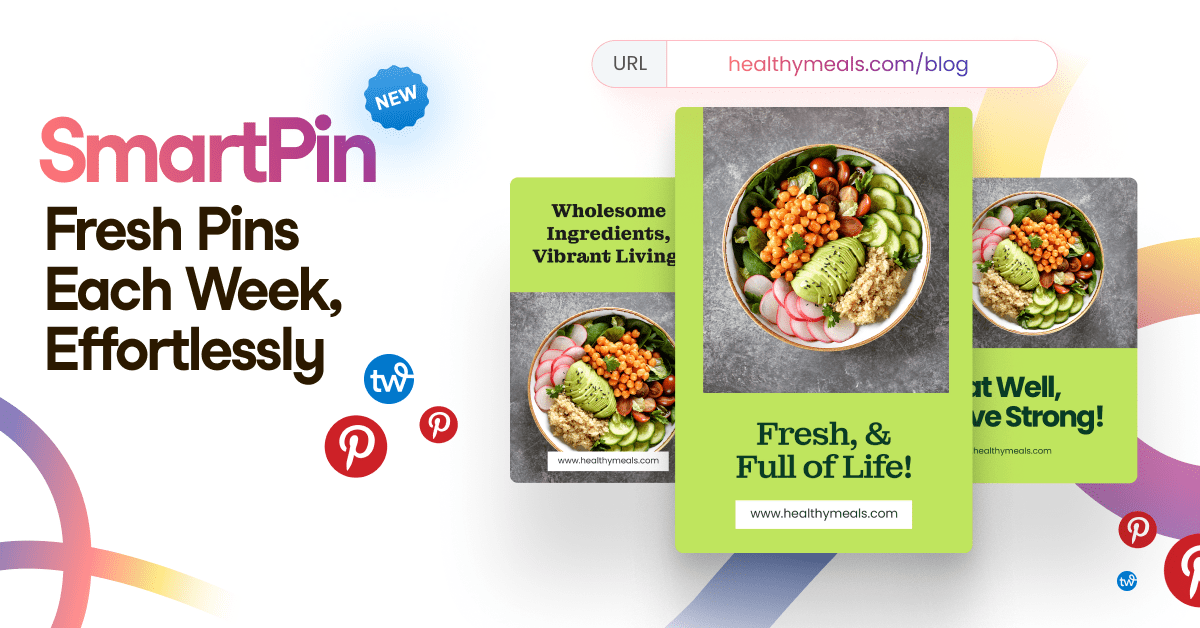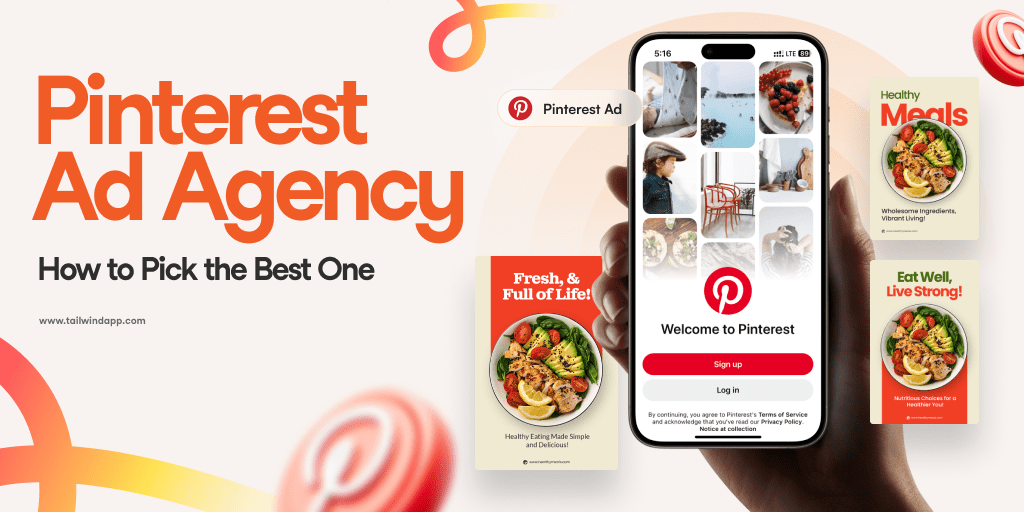
In the bustling world of online retail, attracting visitors to your site is only half the battle.
The real challenge? Convincing those visitors to take out their wallets and make a purchase. Ecommerce Conversion Optimization isn’t just about tweaking a few buttons or changing some colors — it’s a science, art, and a touch of psychology all rolled into one.
Let’s dive into this post as we unveil tried-and-true strategies that have transformed passive browsers into eager buyers!
Understanding Ecommerce Conversion Optimization
Recognizing The Importance of Conversion Rate
In the realm of ecommerce, your conversion rate is a crucial metric that determines how effectively your website is turning visitors into customers.
It’s calculated by dividing the number of successful conversions (e.g., sales, subscriptions, sign-ups) by the total number of visitors.
A higher conversion rate indicates a better user experience and a more profitable website.
In order to stay competitive and grow your business, it’s essential to continually optimize your conversion rate. By enhancing the user experience, providing relevant content, and stating clear calls-to-action, you can maximize the profitability of your online store.
The Concept Of Ecommerce Conversion Optimization
Ecommerce conversion rate optimization involves strategically refining different website elements to boost your conversion rate.
This process is largely based on carefully analyzing your site’s performance, user engagement, and customer feedback.
Some key aspects to consider include:
- Website layout and navigation: Ensure your site is easy to navigate with intuitive menus, search functionality, and well-organized product categories.
- Product pages: Your product pages should provide high-quality images, concise and informative descriptions, and clear pricing information. Offering multiple payment and shipping options can also enhance the user experience.
- Calls-to-action (CTAs): Create compelling, visible CTAs that gently guide users toward completing a sale. Make sure they stand out and are easy to interact with.
- Customer support: Offering responsive and accessible customer support can significantly impact your conversion rate. Providing FAQ pages, live chat, and email support can help shoppers feel confident about their purchases.
As you can see, conversion rate optimization is virtually a never-ending process!
Remember, the goal of optimization is to create a seamless online shopping experience that impresses your visitors and converts them into loyal customers.
But this was just a high-level view; let’s dig deeper into individual tips and strategies.
28 Conversion Optimization Tips
Regardless of how much traffic your site receives, if those visits don’t translate into sales, you’re missing out on revenue and potentially leaving a lot on the table. Here are some tested and effective conversion optimization strategies to elevate your ecommerce game:
- High-Quality Product Images and Descriptions: Visual appeal is crucial. Use clear, high-resolution images and consider offering multiple views or even 360-degree rotations. Your descriptions should be detailed and compelling, emphasizing the benefits and not just the features.
- Mobile Optimization: With a significant portion of users shopping on mobile devices, ensure that your ecommerce site is responsive, quick to load, and offers a seamless shopping experience across all device types.
- Simplified Checkout Process: A complicated or lengthy checkout process can result in cart abandonment. Make it as straightforward as possible, with minimal steps, and offer features like guest checkout for those who don’t want to create an account.
- Offer Multiple Payment Options: Diversify your payment gateways to cater to all customer preferences. This includes credit/debit cards, digital wallets, bank transfers, and even options like ‘Cash on Delivery’ where feasible.
- Implement Live Chat: Real-time assistance can make a difference in conversions. Many visitors have questions, and addressing them promptly can tip the balance in favor of a sale.
- Use Social Proof: Showcase customer reviews, testimonials, and ratings. When potential buyers see that others have had positive experiences with your product, they’re more likely to purchase.
- Leverage FOMO (Fear of Missing Out): Limited-time offers, countdown timers, and stock level indicators can create a sense of urgency and encourage immediate purchases.
- Transparent Shipping & Return Policies: Be clear about shipping costs, delivery times, and return policies. Unexpected costs or ambiguous policies can lead to cart abandonment.
- A/B Testing: Regularly test elements on your site, like CTA buttons, product descriptions, or images to see what resonates best with your audience. This iterative approach allows for continual optimization based on real user feedback.
- Retargeting Strategies: Use ads to target visitors who have left your site without making a purchase. This can serve as a reminder and increase the chances of them returning to complete their transaction.
- Upselling and Cross-Selling: Offer related or complementary products during the checkout process or on product pages. This not only improves conversion rates but can also increase the average order value.
- Clear CTA (Call-to-Action) Buttons: Ensure that your CTA buttons stand out and use compelling language. Whether it’s “Add to Cart,” “Buy Now,” or “Grab Yours,” make it enticing and clear.
- Optimize Page Load Speed: Slow-loading pages can frustrate users and deter them from completing a purchase. Use tools like Google’s PageSpeed Insights to identify areas of improvement.
- Trust Seals and Secure Checkout: Display security badges and SSL certificates to assure visitors that their personal and payment information is safe.
- Personalization: Tailor the shopping experience based on the user’s browsing history, past purchases, or demographics. Using dynamic content, you can showcase products that are most relevant to a particular visitor, making their shopping experience feel more catered to their preferences.
- Use Chatbots: Beyond live chat, chatbots can provide 24/7 assistance, answer frequently asked questions, and even guide users towards a purchase based on their needs.
- Exit-Intent Popups: These popups are triggered when a user is about to leave the site. They can be used to offer a discount, encourage newsletter sign-ups, or highlight a special offer—essentially a last-ditch effort to convert a visitor.
- Loyalty Programs: Encourage repeat purchases by offering loyalty points, exclusive discounts, or early access to sales for members. When customers feel valued, they’re more likely to return.
- Video Demonstrations: Especially for complex products, a video can offer a clear understanding of the product’s benefits, how it’s used, or even customer testimonials. Videos tend to engage users more than text.
- Clear Navigation and Search: Ensure your site is easy to navigate with a clear hierarchy, filters, and a search function that works efficiently. The quicker a user can find what they’re looking for, the higher the likelihood of a sale.
- Offer Bundle Deals: Grouping related products together at a discounted rate can encourage customers to spend more than they might have initially intended.
- Address Objections with FAQs: Many customers have reservations or questions before making a purchase. By addressing these preemptively in a clear FAQ section, you can reduce the barriers to making a decision.
PRO TIP
Find your customer’s most frequently asked questions by scouring your social and email inboxes to identify themes, or if you have a Customer Success team, ask them what people want to know before they purchase.
23. Social Media Integration: Make it easy for users to share their purchases or favorite products on social media. This not only offers them a sense of community but also acts as free marketing for your brand.
24. Seamless Multi-channel Experience: Ensure that your branding, promotions, and overall shopping experience are consistent across all channels—be it your main website, mobile app, or even a physical store.
25. Feedback Loops: Actively seek feedback from your customers about their shopping experience. This can be done through post-purchase surveys or user testing. Direct feedback is invaluable in fine-tuning your optimization strategies.
26. Cart Recovery Emails: If a customer abandons their cart, send them a reminder email—possibly with a small discount—to encourage them to complete the purchase.
27. Offer Price Match Guarantees: This can help sway a potential customer who might be comparing prices across different platforms.
28. Show Real-time Activity: Tools that showcase real-time purchases (“John from New York just bought this!”) can instill a sense of trust and popularity for products.
With these strategies in your arsenal, you’ll be well-equipped to boost conversions in your ecommerce venture.
Remember, the key is to remain user-centric, address pain points, and continually test and adapt based on changing consumer behaviors and technological advancements.
Tools For Optimization
While we decided to give you a list of tools that might help you to optimize conversion rates, don’t become a victim of “new-tool-syndrome”.
In most cases you should just focus on images and copy, but if you would like to go down the CRO rabbit hole…here is how:
Google Analytics
Google Analytics isn’t just for counting website visits. Delve into user pathways, pinpoint exit pages, understand demographics, and find out which devices your visitors predominantly use. Using UTM parameters, you can also track the performance of various campaigns, helping you understand which marketing efforts are most effective.
Optimizely
A leader in A/B testing, Optimizely facilitates real-time modifications to your site, allowing you to test different designs, copy, or user flows. It’s user-friendly, making the world of conversion optimization accessible even to non-technical stakeholders.
Hotjar or Crazy Egg
Beyond traditional analytics, tools like Hotjar and Crazy Egg allow you to visualize user interactions. Heatmaps indicate where users click or hover most often, while session recordings provide a video playback of user journeys. This visual data is invaluable in understanding user behavior.
Yotpo
User reviews are essential for ecommerce sites. Yotpo allows businesses to gather and showcase reviews, improving trust and credibility. Yotpo also integrates user-generated content like photos, adding a more personal touch to product pages.
Tawk.to or LiveChat
Instant communication can be the difference between a sale and an abandoned cart. Tools like Tawk.to and LiveChat facilitate real-time conversations, allowing businesses to address concerns or offer support right when it’s needed.
ManyChat or MobileMonkey
Chatbots are becoming integral in guiding users, answering frequently asked questions, or even collecting leads. ManyChat and MobileMonkey, especially focused on Facebook Messenger, allow businesses to automate conversations without compromising user experience.
SurveyMonkey or Typeform
Understanding user sentiment and feedback is crucial. SurveyMonkey and Typeform provide engaging interfaces for collecting data — from post-purchase feedback to in-depth market research.
Moz or SEMrush
Optimizing for search is critical in driving organic traffic. Tools like Moz and SEMrush offer insights into keywords, backlink strategies, and even competitor analysis, ensuring your site ranks well.
Fomo or ProveSource
Social proof can drive conversions. By showcasing real-time purchases or activities on your site, Fomo and ProveSource create an atmosphere of trust and a sense of urgency.
Rejoiner or CartStack
Abandoned carts are a significant concern for ecommerce businesses. Rejoiner and CartStack specialize in sending targeted emails to users who’ve abandoned their carts, often recovering potential lost sales.
OneSignal or PushCrew
Push notifications can re-engage users, remind them of abandoned carts, or notify them of sales. OneSignal and PushCrew make this process intuitive, providing businesses a new channel of communication.
Nowadays, there is a tool for everything and anything. But do not analyze just for the sake of analyzing. Pick one thing that might have the biggest impact and optimize it.
Techniques for Ecommerce Conversion Optimization
Now that you know what to look for and have the tools at your disposal to allocate the potential bottlenecks even better, let’s have a look at techniques for ecommerce conversion rate optimization:
A/B Testing
One of the cornerstones of optimization, A/B testing lets you compare two versions of a page to determine which performs better. Whether it’s different imagery, CTAs, or copy, this technique provides data-driven insights into user preferences.
Customer Journey Mapping
This technique involves creating a visual representation of every experience your customers have with you. It helps in understanding pain points, moments of friction, and opportunities for improvement in the buying process.
Segmentation
By categorizing your audience into distinct segments based on behavior or demographics, you can tailor your messaging and offers, ensuring higher relevance and engagement.
Retargeting
Using ads to “follow” users who’ve visited your site but didn’t make a purchase is a powerful technique. It serves as a reminder and can entice them to return and complete their transaction.
Personalization
Leverage user data to offer personalized product recommendations, content, or even email campaigns. This tailored approach often results in higher engagement and conversion rates.
Exit-Intent Strategy
Detecting when a user is about to leave and presenting a compelling offer or message can capture potential lost sales. It’s an effective way to grab attention just when a user might be on the fence.
User Feedback Collection
Feedback isn’t just criticism; it’s valuable data. Regularly collecting and acting on feedback ensures your ecommerce platform evolves with the needs of your customers.
Sales Funnel Optimization
Analyze and optimize each step of your sales funnel, from awareness to conversion. Ensure that at every stage, users have clear guidance and motivation to proceed.
Value Proposition Enhancement
Your value proposition should be clear, unique, and compelling. Whether it’s product quality, pricing, or customer service, ensure that users immediately understand why they should shop with you.
Landing Page Optimization
Landing pages, especially for campaigns, should be focused and free from distractions. Every element, from copy to imagery, should align with the campaign’s goal, driving users towards conversion.
By leveraging these techniques and regularly reviewing their effectiveness, ecommerce businesses can ensure they are always optimizing for the best possible user experience and conversion rates.
Conclusion
In the ever-evolving landscape of ecommerce, staying ahead means constantly refining and optimizing your strategies.
By leveraging the right tools and embracing tried-and-true techniques, businesses can not only enhance the user experience but also significantly boost their conversion rates.
It’s essential to remember that while tools provide valuable insights, it’s the combination of data-driven decisions and a genuine understanding of your audience that makes for a successful ecommerce venture.





